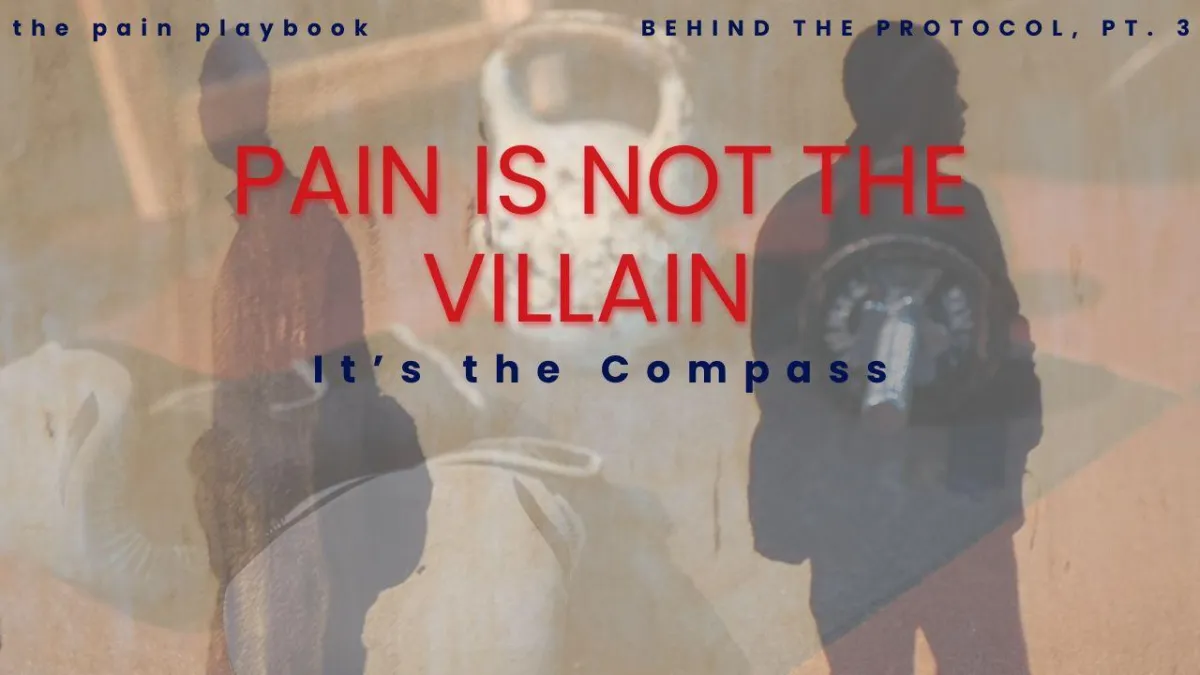
Pain is Not the Villan
When Pain Is a Conversation, Not a Command
Behind the Protocol — Part 3
You’ve been cleared. Maybe by your surgeon. Your physical therapist. Your primary.
Structurally, everything checks out. The range is there. The scan looks good. And yet within all these green lights there’s a moment when you realize the pain remains.
Lingering. Sometimes quiet. Unexplained. Persistent.
And in that moment, you start to wonder:
“Am I doing something wrong?”
“Am I not trying hard enough?”
“Shouldn’t I be past this by now?”
It’s one of the most isolating parts of recovery. And we don’t talk about it enough.
When the Pain Isn’t Just in Your Head
At BodyTech, we work with people who’ve been cleared but still don’t feel right in their body.
They meet every mobility metric but still wince when they reach.
They pass strength tests but tire out in 10 minutes.
They’re told the pain is “normal,” but something still feels off.
What we’ve learned — through hundreds of stories and sessions — is that pain doesn’t always mean damage.
Sometimes, it’s dysregulation.
Sometimes, it’s grief.
Sometimes, it’s your nervous system still running the alarm long after the fire has been put out.
Pain is personal. It’s persistent. And it’s incredibly intelligent. We have to know how to listen.
Case Study: “The Pain Wasn’t from the Ring — It Was What I Brought Into It”
A client in his early 50s came to us a few months and he was into trying boxing for the first time. He’d been active his whole life — hiking, gym, the occasional pick-up game. But something had shifted. His lower back had started aching after every training session. Stiffness, soreness, and this strange sense of hesitation had him worried and frustrated.
He had seen a specialist. “Nothing serious,” they’d said. He’d been cleared for all activity. Maybe just stretch more.
But for him, every round felt like a risk.
When his coach sent him our way, we didn’t deal with the punch. Our job was to help make the coaching stick.
So, we started with the system. We work to help coaches get their athletes as healthy and strong as possible.
His posture wasn’t the problem. It was his breath. His fascia was locked down from years of guarding tension in his back and abdomen. His lymphatic system was congested. His nervous system was still bracing for impact, even when the threat was gone.
Once we addressed those layers, the pain started to shift.
Not disappear overnight. But shift.
And more importantly, his story around the pain changed.
He stopped seeing it as a reason to stop and started using it as a compass — a tool that told him where he needed more support, not less.
Pain Isn’t Just the Fire. It’s the Smoke Alarm
We’ve been taught to treat pain like a problem to silence.
Ice it. Heat it. Stretch it. Brace it. Power through.
But pain isn’t always a signal to push. It’s more a message to pause. To listen.
At BodyTech, we don’t chase pain. We trace it. Because tightness, stiffness, or inflammation often isn’t
about the muscle. It’s about the system underneath — the why behind the where.
Sometimes, the pain you feel in your hip is your lymphatic system stuck in stagnation.
Sometimes it’s your fascia refusing to glide.
Sometimes it’s your nervous system whispering: “I’m not ready yet.”
Pain is a messenger. It’s not the enemy.
Pain isn’t weakness or failure. It’s data. It’s how your body says: “I’m not ready for that yet.” Or “You missed a piece in your recovery plan.”
Too often, recovery is framed as “fixing” pain or “pushing past” it.
But that mindset burns people out. Or worse, it sends them back into the same injury loop.
What if we looked at pain like a conversation?
Not a full stop. But a sentence that needs translation.
Pain Is the Tool, Not the Villain
One of the biggest shifts in recovery? Learning to see pain as something to listen to.
That’s what pain science experts like Noigroup emphasize: the story of pain isn’t always about tissue damage. It’s about perception, load, and language. Pain is your body asking for a different strategy.
A slower pace. A smarter sequence. A more complete recovery, not just from the injury, but from everything that came with it.
What the “Push Through It” Culture Misses
Pain becomes dangerous when it’s ignored not because it always signals damage, but because it becomes the only voice in the room.
If no one’s listening early on, the body will start screaming.
If you override those cues for weeks, months, or even years… your system begins to rewire itself around the tension.
This is why we teach clients to use their pain as a map not a stop sign.
In fact, in our Pain Personality Scale (part of the R3 Recovery Method™), we help clients decode:
Are you the type to freeze or shut down at the first sign of pain?
Do you tend to bulldoze through pain until something snaps?
Do you override your body’s cues because you “should be fine”?
Understanding how you relate to pain is often the key to building a protocol that actually works.
A Different Kind of Recovery Conversation
This is what recovery looks like when pain is a partner and not a problem.
This is part of our Behind the Protocol series, where we unpack the layers that don’t fit into a checkbox or clearance form.
Because what happens when you finally understand your pain?
You stop fearing it. And start building with it.